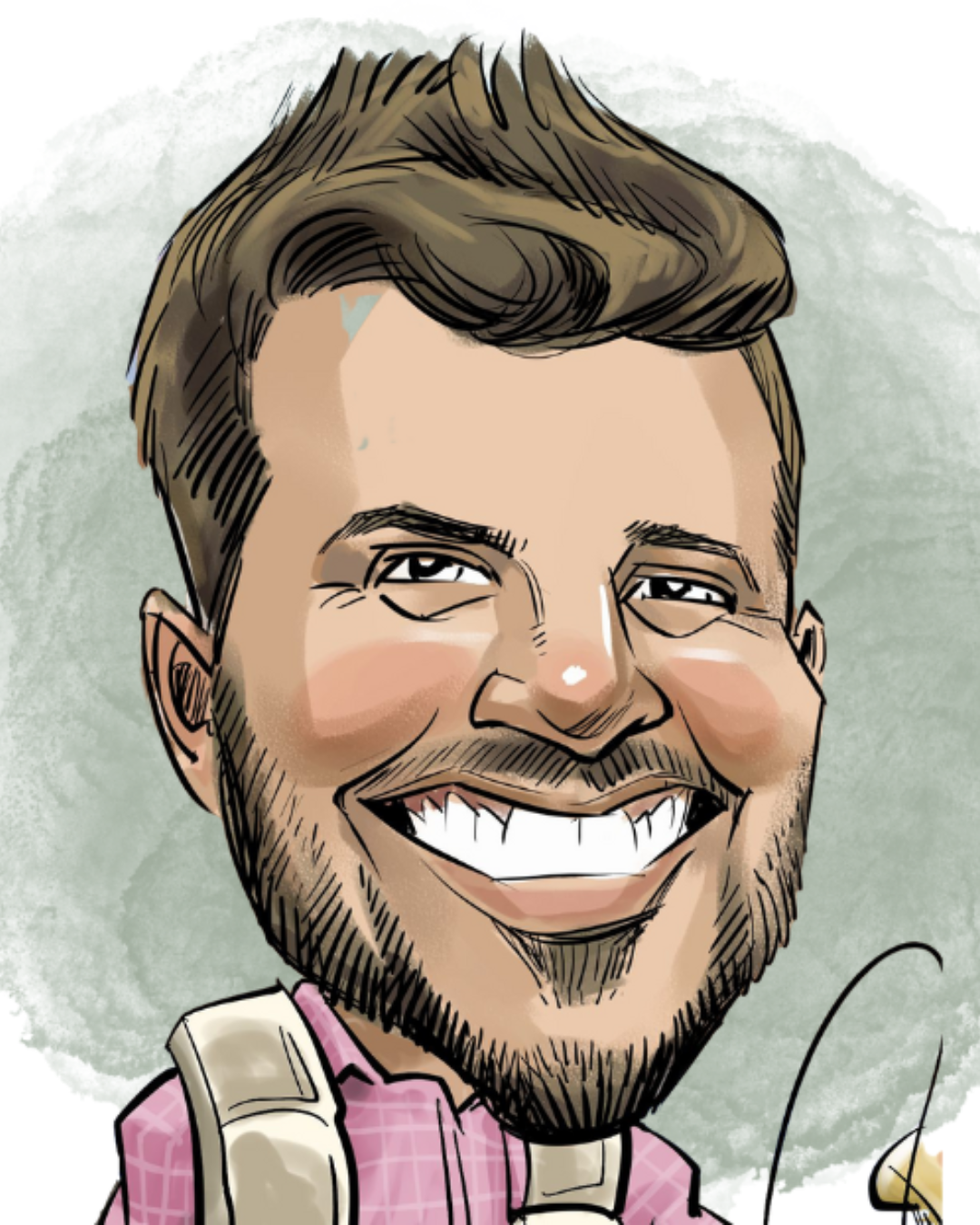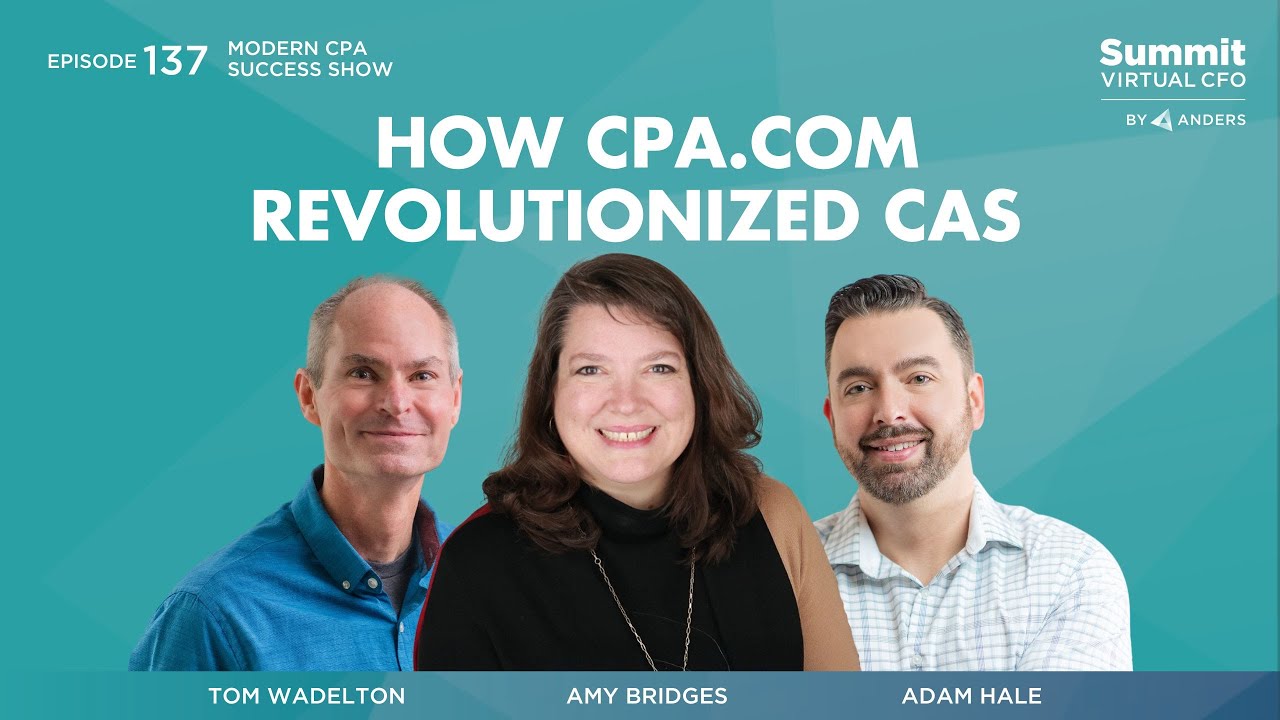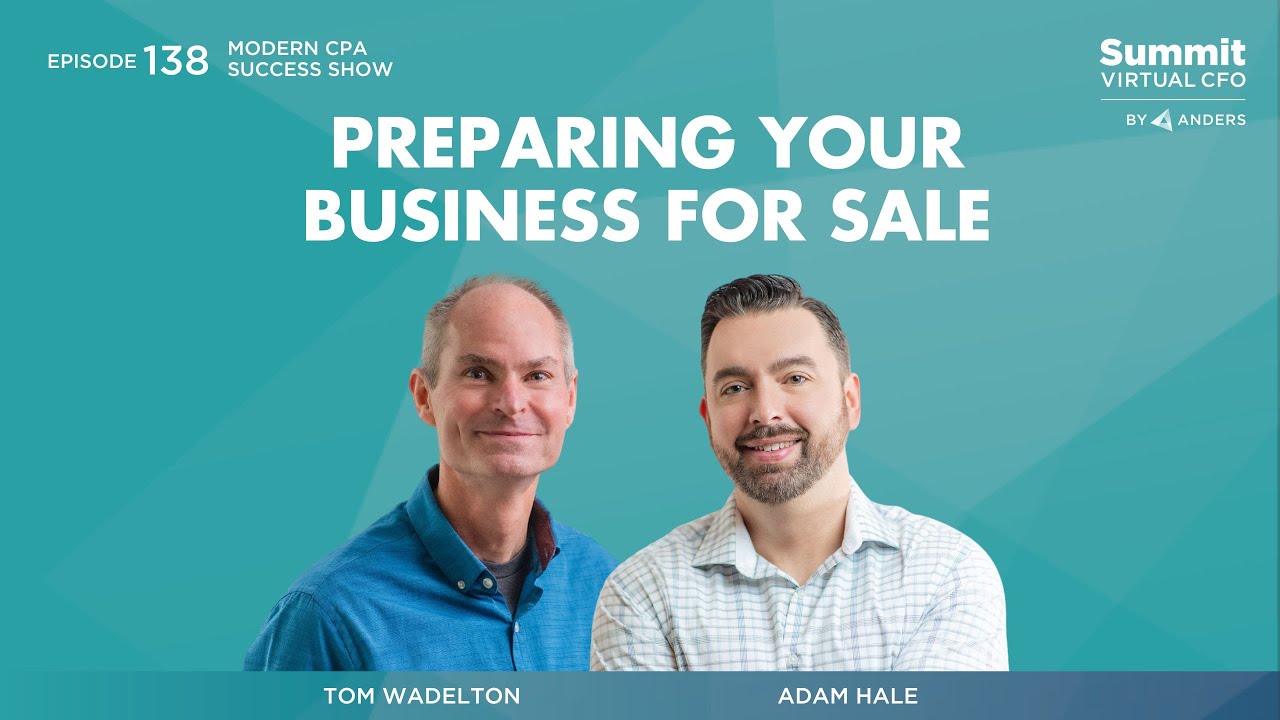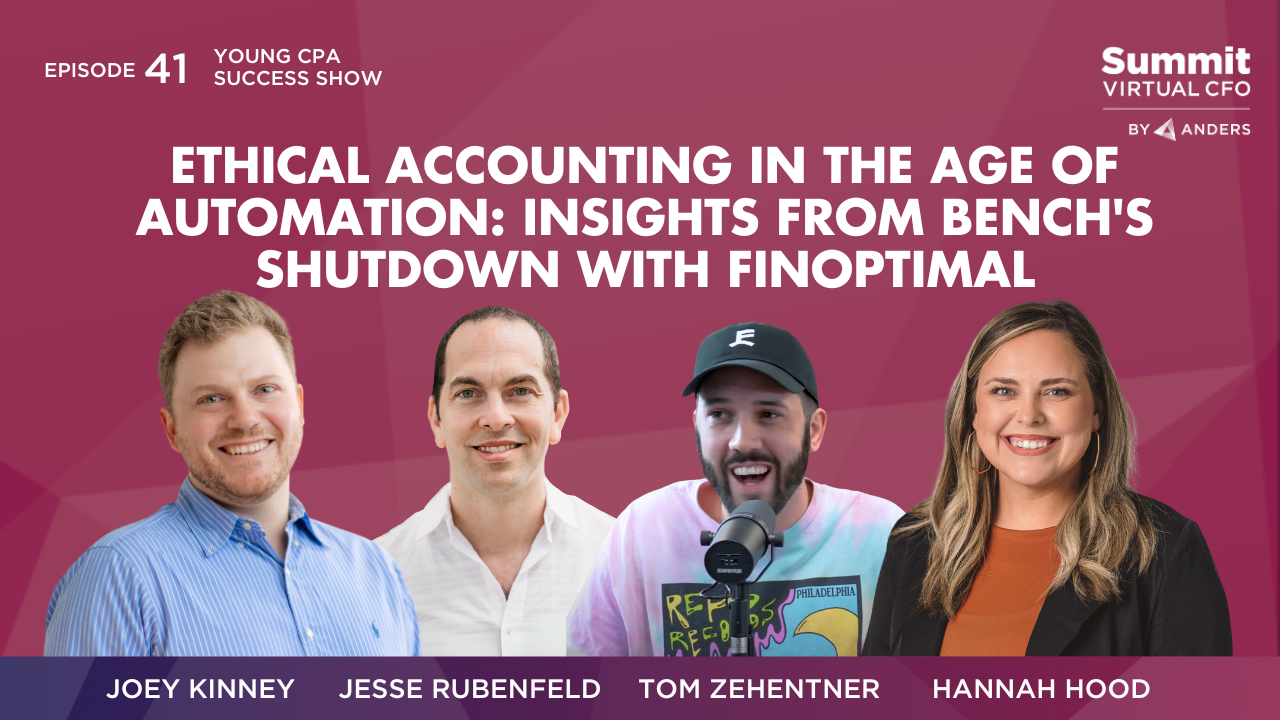One of the best parts of hosting the Modern CPA Success Show podcast is interacting with our listeners: finding out where they’re putting our suggestions to use and where they’re running up against obstacles.
We always love a one-on-one chat with our listeners, but we thought it might be useful to bring our more common questions to the audience at large. If one person is asking the question, chances are, lots of other people are too.
So Jamie Nau, Virtual CFO Director + Practice Lead, and I sat down to pick each other’s brains on the topics most important to our listeners.
Here’s what we discussed.
1. What approach do you take to pitch your CFO services to existing clients, for example, a tax client? How are you presenting that service to them?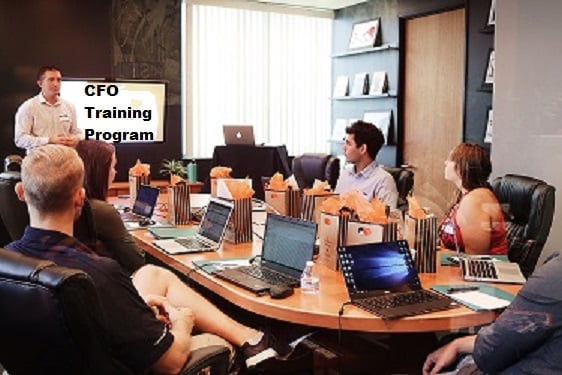
It all depends on the kind of relationship you have with them already. If you’re only exchanging documents at tax time, it’s going to be hard to get them to think of you in an advisory capacity. In that scenario, we recommend the first step you take is to start meeting once a month to talk about what’s going on, to get ahead of the tax returns and develop a relationship.
If you do have an ongoing, consultative relationship, the best way to introduce CFO services is to incorporate it into one of your standing meetings. We give the client a heads up that on this date we’re going to bring the CFO into a meeting to answer questions and maybe even have the CFO take a look at their financials ahead of time so they can show up with ideas for solutions.
In-person meetings are the best settings to have those conversations, rather than via email. Be informal: you’re not trying to sell them something, you’re just presenting them with options.
You may also get the opportunity to pitch CFO services during a sales call to a client who has come to you for traditional accounting services – not because you’re trying to upsell them, but because you’re looking at their problems and seeing if they match with your solutions. To do this well, you want to make sure every member of your sales team is not only well educated about the various levels of service but trained to identify which common problems those services can solve. That will allow you to make the suggestion for a VCFO package right out of the gate, if a client seems to need that kind of support.
2. What makes a good CFO? How do you identify potential CFOs from your accountants?Traditionally, accountants consider themselves doers. Operationally minded people, they value process, accuracy, technical details. That’s how most of us start out in the profession, with a Controller mindset.
At a certain point, however, you move on to the job of reviewer. That’s where the CFO mindset can start to develop. When I’m looking at potential CFOs, I see who excels in that realm: someone who doesn’t just redo the original work but knows how to ask high level questions to get to the root of the problem. These are often people who enjoy sitting down and having big-picture conversations about business, rather than reviewing a bunch of journal entries.
It's one thing to be able to tell a client what the number is. It's another thing to be able to say, “Yes, here's what happened. But here's why you care.” A good CFO needs to be able to bridge that gap between what they’re seeing and why it’s important. A great CFO knows how to relay that to the client in a way that they understand, appreciate, and resonate with emotionally.
3. What books or resources do you recommend for people considering advisory work?
The CFO mindset can be developed and following your curiosity about business is one way to do that. We always tell our CFOs that the best thing about reading a book is you’re taking that person’s knowledge, even if you didn’t actually live the experience yourself.
The first two books we recommend are general business books, Simon Sinek’s, Start with the Why, and Michael Gerber’s E-myth. These are books that help you understand how to look at a business from a consulting perspective. Sinek’s book makes a powerful case that you can always look at the numbers, but the real impact comes when you go a couple of levels deeper to understand why we’re doing what we’re doing.
Gerber’s book is one of my all-time favorites because it outlines an issue you’re going to run into as a consultant: a lot of people become business owners because they are really good technicians, but if they don’t learn to think like an owner, they’re going to get stuck.
Understanding that gives you a head start when you sit down with an owner. They might want to spend the whole meeting talking about the services they provide and how they provide it better than anyone in the world. But you need to get them to change their focus and get them to think about how to work on their business, not just in it.
4. How do you build an onboarding team, if you can’t afford to take your best producers off the bench?It’s not easy to move a successful producer into a managerial role, but you shouldn’t underestimate the long-term value of a strong onboarding team either. That team might not be generating revenue directly, but they ensure client satisfaction and retention – and help the rest of your production team work more effectively.
That said, you could consider moving a top producer into an onboarding role on a partial basis: Keep them on some client accounts – which helps them stay on the cutting edge – and transition them to onboarding in a stair-step way.
Another option is to find a non-technical person to head your onboarding: a critical thinker who asks big-picture questions and stays out of the weeds. In that case, you’re looking for someone with a gift for project management who knows how to facilitate communication between clients and technical staff.
Whichever way you choose to go, don’t let the needs of the present get in the way of building your company’s future. In order to grow, you need to create processes that allow your business to run smoothly without depending on a single star player or even a small all-star lineup.
5. How do you build an interactive training system that includes on-the-job training, without overtaxing current staff?On-the-job training is, of course, a necessary part of onboarding a new hire. There are simply details you’ll never pick up until theory becomes practice. That said, we see training as a four-part process – some of which the new hires can do on their own, asynchronously, some of which requires support from current staff.
To lay the foundations for new hires, we’ve built a video library, divided into modules, that walks new hires through what we do and why. We’ve pulled in our podcasts, webinars and other trainings. If you’re trying to build your own library, ask yourself, “What are the 5-10 most important things people need to know before working with a client?” and then start filming.
Part of the videos includes homework, to ensure the lessons are being fully absorbed. Using anonymized information from our actual clients, I created test cases. This is easier than it sounds; as I made the videos, I looked for related scenarios our CFOs could run through, that we could then grade.
The third leg of training is giving new hires the opportunity to ask questions. Joey, our onboarding CFO, offers a 30-minute timeslot daily for CFOs to ask questions and reflect on experiences. This is an investment of time, of course, but it’s just 30 minutes a day; you could also split the position between multiple experienced staff members, asking each person to be “on-call” for 30 minutes on different days.
Finally, we have a virtual book club. CFOs read from a list of books and then write up a report on how they would apply a book to a certain client. Those reports stay online, so new CFOs can read other people’s take on the book. When we identify an area of weakness with a CFO, we also use this resource to support them: whatever their struggle, we look for a relevant title and ask them to dive in.
If this sounds complicated – it is. It's really hard to train people on what you do if you don't know what you do. Before we started training, we took months developing best practices and procedures. We had to ask ourselves, “What do we want this to look like? What is our best practice? If we could design an ideal client in an ideal process, how is it going to look?”
It’s going to be a sticker shock when you see how much of an investment it is to create a training program. But one of the pillars of scalability is not having to allocate as many resources to training down the road. If you build the infrastructure and then have the right person running it, that’s the lever upon which you’re going to grow your business.
(For more insights into creating a profitable CFO practice, check out our playbook: Building the Virtual CFO Firm in the Cloud, by Jody Grunden.)
Our goal is to make our Modern CPA Success Show podcast as interactive as possible, so we hope to keep up this feature and include our audience in the conversation. If you ever have a question you’d like to have answered, send it our way: mcpasuccessshow@anderscpa.com.
.png?width=120&height=77&name=Summit-Virtual-CFO_color_rgb%20(1).png)





